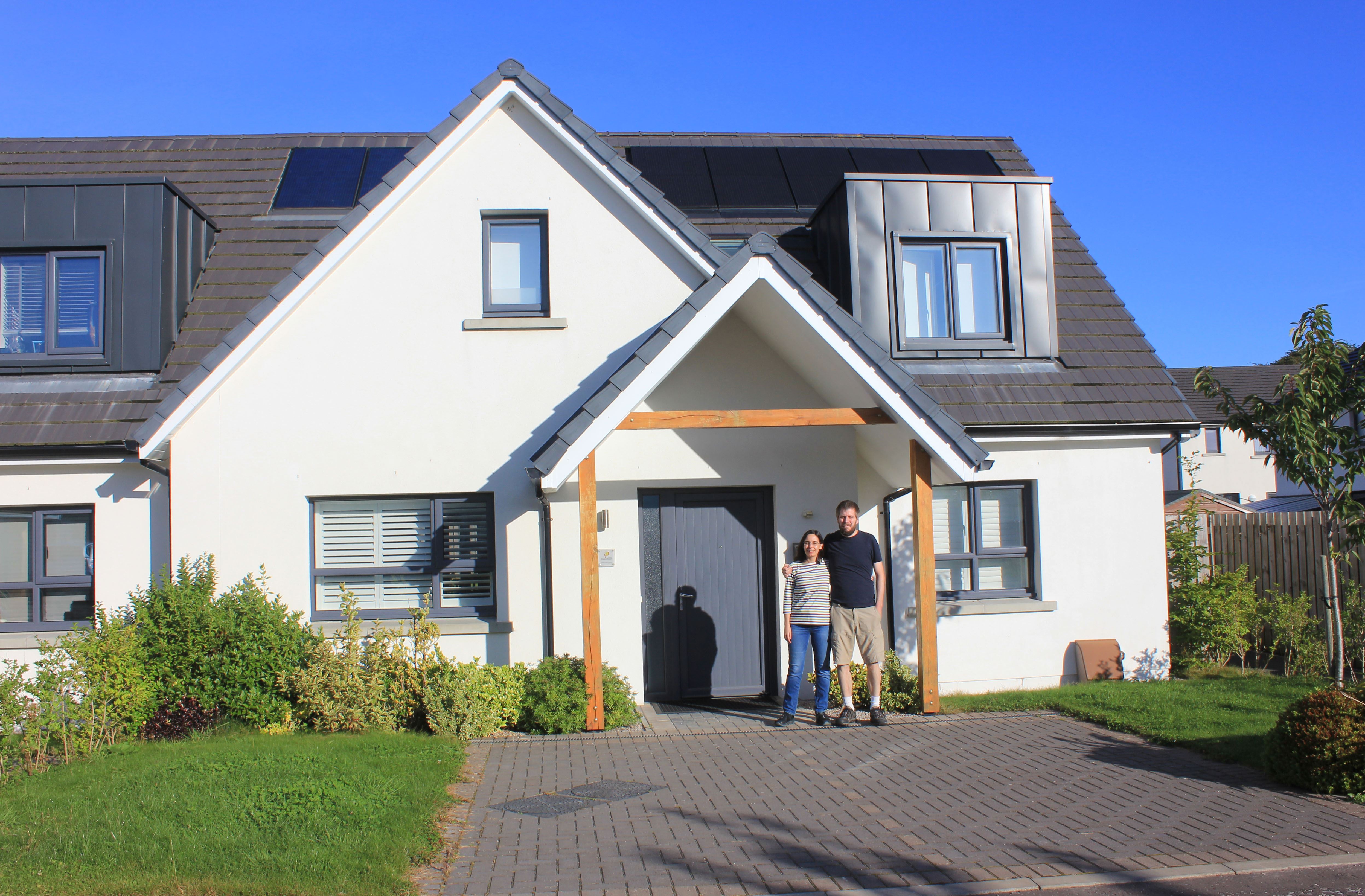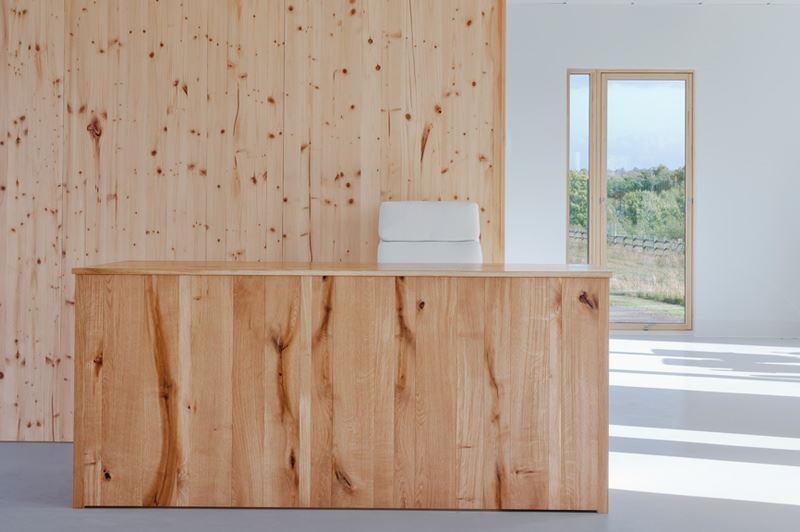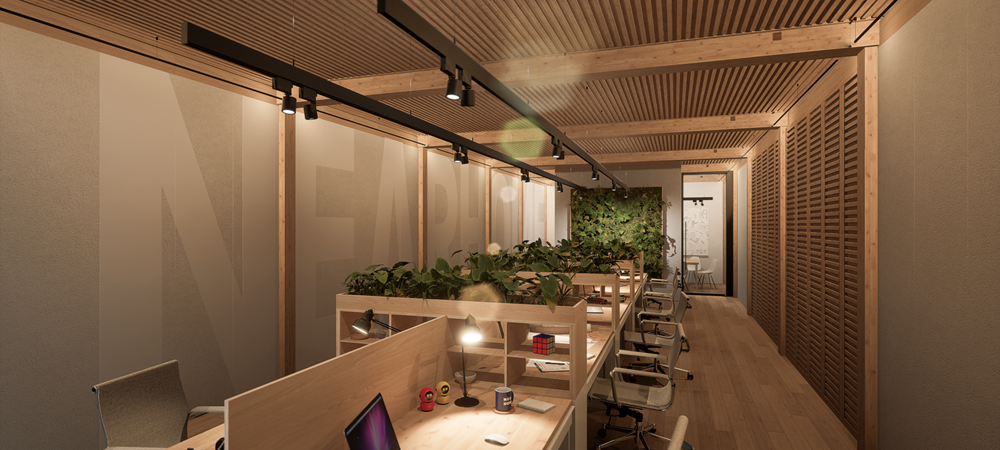Content
What’s it like to live in a Passivhaus? – a homeowner’s perspective

In the late 2010s, Dandara, supported by BE-ST and Robert Gordon University, built 2 Passivhaus homes to research Passivhaus compared to Scottish Building Standards. In 2021, the pioneering research turned into a home for the couple who have been living there since.
The domestic Passivhaus project aimed to create a deeper understanding and market adoption of an ‘affordable Passivhaus’ standard based on establishing, as far as possible, a Scottish-based supply chain.
We recently connected with the current homeowners, Joana and Fredrik, to talk about comfort, costs and whether or not they would recommend living in a Passivhaus to others. The verdict? They say they couldn’t go back to any other kind of house.
Hear more below in this interview between Sarah Buchanan, BE-ST, and Joana and Fredrik. If you are interested in hearing more from a homeowner perspective, listen to season 2 of our Accelerate to Zero podcast here.
Sarah Buchanan: Did you know much about Passivhaus before you moved in?
Joana: When we started thinking about houses, we were thinking about eco-friendly homes. We Googled this and then ‘Passivhaus’ came up and then we started going down a Passivhaus Wikipedia rabbit-hole.
Then we started thinking, are these things being sold in Scotland? We looked and we couldn't find any. We wouldn’t have minded if it was a two-bedroom, three-bedroom. If it was Passivhaus house, we were going to get it.
If this house had not come along, we were going to buy a plot and pay someone to build a Passivhaus for us.
Sarah Buchanan: What motivated you to choose a Passivhaus home?
Fredrik: I would say we’re an environmental family. We're very conscious of that sort of thing.
Sarah Buchanan: And how do you like living in the house? What's it like?
Joana: It's the best. I could never live in another house that isn’t a Passivhaus.
There’s no draughts, it's very quiet. It’s so good for my mental health.
There are four big windows in the kitchen and in Summer it does sometimes get a little bit too warm, but we're going to take care of that. We're just going to put blinds there.
It's great in the winter and our bills are so low. When people are complaining about the heating bills and we're like we don't really use much. We feel so lucky.
Sarah Buchanan: What are your heating bills like if you don't mind me asking?
Fredrik: Around £75 per month for everything.
Sarah Buchanan: How does the air tightness affect your kind of daily life? You mentioned it's a wee bit hot in the summer, but you've got a plan for that. What other kind of effects does it have?
Joana: As I said there are no draughts. I remember someone saying that sometimes it's not so much the temperature in your room, it's how you feel it on your skin. And I get it, it's true.
Previously we lived in a house in the city centre that was cold, where we’d be cleaning off the mould. This house is very, very dry though – no mould at all.
Sarah Buchanan: What would you say is the kind of the biggest benefit for your Passivhaus?
Joana: It's so comfortable. It's so nice to live in. I remember the owner of another Passivhaus saying that and it's a very weird concept. But now that we're here, I don't know how to explain it any better. It's such a comfortable house.
Sarah Buchanan: And what about the MVHR system? Do you find it noisy at all?
Fredrik: I don't think we hear anything, no.
Joana: For me in the beginning, yeah. The system has different settings so we figured out we can actually have it at the minimum 1 instead of 3.
Sarah Buchanan: So you've made it work for you?
Fredrik: Exactly.
Sarah Buchanan: Was there a premium on the house because it was Passivhaus?
Fredrik: Yes but it was not a big premium.
Joana: I think most people would be looking at the brochure and look at two similar houses and be thinking why would I buy the more expensive one?
Funnily enough they didn't even try to sell it much as a Passivhaus.
They just mentioned something about being energy efficient. And I was like, ‘I know what a Passivhaus is!’ But most people don’t know I think.
Sarah Buchanan: I think that's one of the challenges: for surveyors it’s hard to value Passivhaus right now and buyers don't realise what they're getting, so that's a missing piece of the puzzle.
Joana: I think that the people that know what Passivhaus is would be willing to pay more because I have come across a few people who are like ‘you live in a Passivhaus? You’re so lucky.’
Sarah Buchanan: What would you say to homeowners that don't live in a Passivhaus and maybe have of reservations about it? Is there anything you would say to them?
Joana: They don’t know what they’re missing. It’s amazing. But it's hard to communicate that in a way for people to understand when I say it’s a really comfortable house. What people pay attention to is bills. The bills really sell it when I say my bills are low.
The BE-ST funded project was to test the hypothesis that the certified ‘Passivhaus’ (PH) standards can be taken to volume-housing market This house demonstrated that the thermal comfort levels are unquestionable, and the design, components and construction skills are evidently available in Scotland. I am hopeful that the PH process documented in this project can act as a viable template to follow for other volume-housebuilders who build the 90 % housing stock. There are still some barriers for the implementation of the PH standards in Scotland, ranging from up-lift costs, valuation to skills shortages. However, the project evidenced that any volume-house builder has the capacity and resource to overcome these challenges. Professor Gokay DeveciRobert Gordon University
It was a real honour to work with BE-ST and Robert Gordon University on the Passivhaus project and we had high hopes for the completed property as energy efficiency has always been at the heart of our construction techniques. However, it was impossible to predict just what a big saving the Passivhaus would deliver until the owners had been settled in their home for a while. It’s incredible to hear how little Joana and Fredrik are having to spend on their energy bills. While we expected at least some reduction on their outgoings, it’s great to hear that their Dandara home is also having a positive impact on their mental health and wellbeing too! Claire BathgateHead of Sales, Dandara Aberdeen





